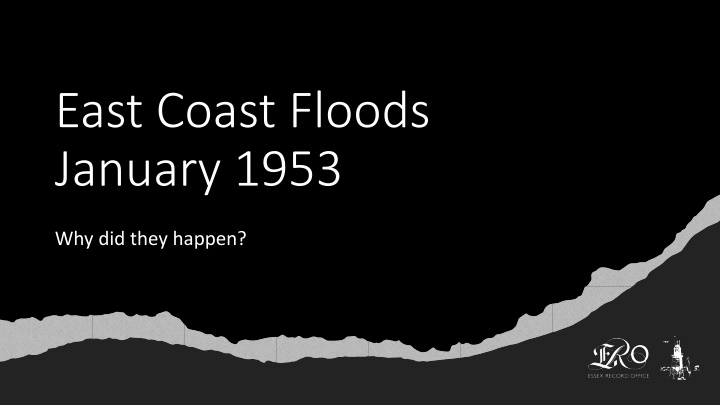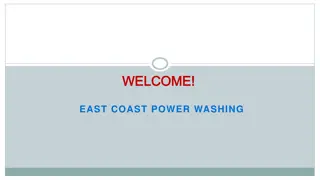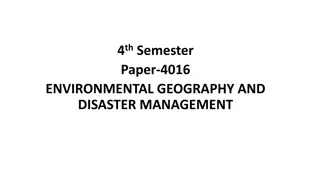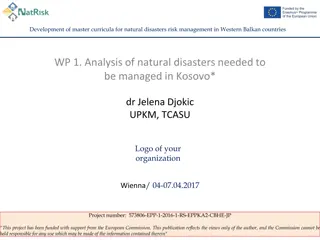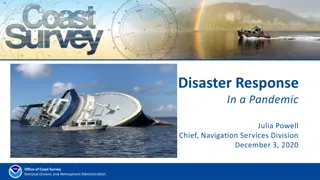Causes of East Coast Floods in January 1953
The East Coast floods in January 1953 occurred due to a combination of factors such as a spring tide, strong winds pushing sea water towards the English Channel, very low atmospheric pressure, and a storm surge. The lack of flood warnings at that time also contributed to the devastation experienced in areas of Essex. This catastrophic event highlighted the importance of understanding and preparing for such natural disasters.
Download Presentation

Please find below an Image/Link to download the presentation.
The content on the website is provided AS IS for your information and personal use only. It may not be sold, licensed, or shared on other websites without obtaining consent from the author.If you encounter any issues during the download, it is possible that the publisher has removed the file from their server.
You are allowed to download the files provided on this website for personal or commercial use, subject to the condition that they are used lawfully. All files are the property of their respective owners.
The content on the website is provided AS IS for your information and personal use only. It may not be sold, licensed, or shared on other websites without obtaining consent from the author.
E N D
Presentation Transcript
East Coast Floods January 1953 Why did they happen?
Three things happened on the night of January 31st1953
Tides Tides are the regular rise and fall of sea levels. They are caused by the gravitational pull of the Moon and the Sun. There are two high tides (when the sea is closest to the shore) and two low tides (when the sea is furthest away from the shore) every day. The size of the high and low tides changes over the month. When there is a full or a new Moon (when the Sun and Moon are lined up) the tides are called spring tides. High tides are higher and low tides are lower. This is because the gravitational pull is highest when the Sun and Moon are lined up. On 31stJanuary 1953 there was a spring (high) tide.
Strong winds pushed sea water southwards towards the English Channel. The channel is narrow and shallow so the sea rose even further.
Air (atmospheric) pressure The earth is covered in a layer of air (the atmosphere). At different times the air is thicker and thinner in different places around the globe. Where the air is thicker there is more air and so there is higher atmospheric pressure. Where the layer is thinner there is lower atmospheric pressure. High pressure presses down on the sea and causes the sea levels to drop. Low pressure means the sea levels can rise as there is less force pushing down onto the sea. On the 31st January 1953 there was very low atmospheric pressure.
A storm surge Strong wind blows down onto the surface of the sea Water can t be pushed down so it surges inland The water level was already higher than usual because of the spring tide and low pressure.
Large areas of Essex are low lying - that means that they are only a few metres above the average sea level. A lot of Canvey Island is only 2 metres above the average sea level. Height above sea level Areas of Harwich and Dovercourt are between 3 and 15 metres above average sea level. These areas today are protected by flood defences that weren't there, or weren't so well built, in 1953.
Warnings There wasn t a good system of flood warnings in 1953 so people couldn t prepare. Today you can get warnings of a possible flood online, on a phone, by text, by listening to the radio or watching the weather forecast on the television.
